
In October there will be the 17th World XiangQi Championship, generally the true World Champion is the guy who wins the Chinese Championship, but also for this tournament, I don’t remember it to be won by a non-Chinese. Since it will be in Malaysia, a beautiful country, I’m thinking of participating…

obviously some preparation is needed, hence I’m taking out old dusty books, and beginning to see some positions on the board.
The position in the image above it’s in a sense beautiful, because it gave me a lot of thoughts.
While trying to solve it, I began with C8+8 (Cannot on the eighth column advances of 8 steps, Chinese chess uses a different system to write down the games) which blocks the Elephant. This blocking idea would have delighted Nimzowitsch, which surely would have used it in his book: My System.
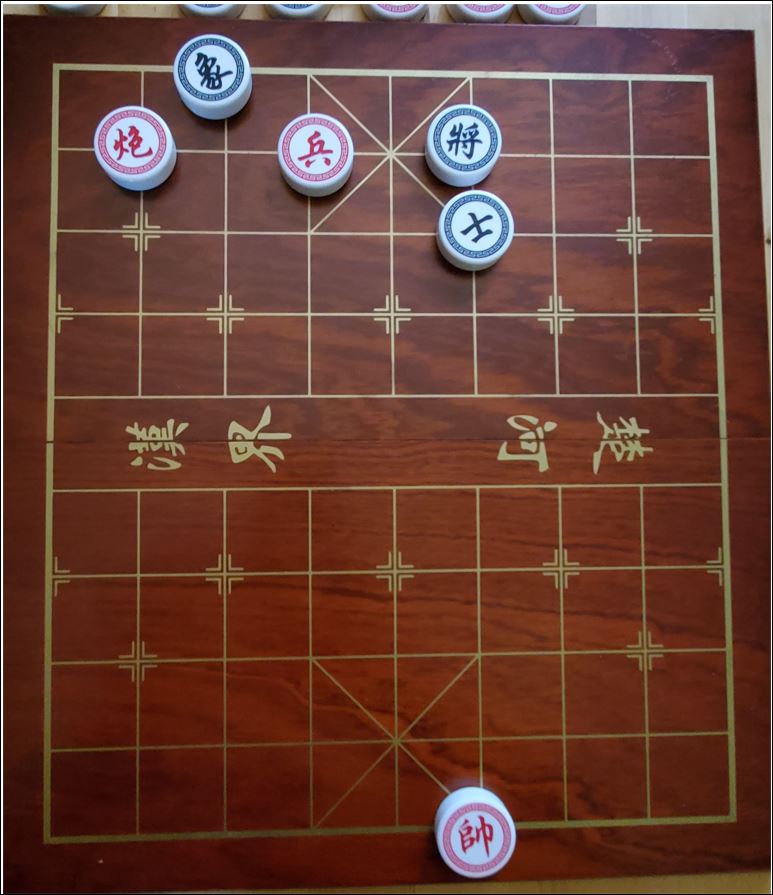
Then, I began to realize, maybe it’s more precise to say: I began to feel, I was playing chess, but the chess of at least 1000 years ago.
There is no queen! Women and war didn’t make much sense to the people who created XiangQi or Chess, they likely knew the horrors of the battlefield. In this game, we don’t have kings on the board, we have generals on a terrain maneuvering their armies. The palace could be a tent.

But yet, I had to find the idea to solve this position. I thought breakfast could help…

Ok breakfast wasn’t the right way to go, because it put me in an Insulin Coma!
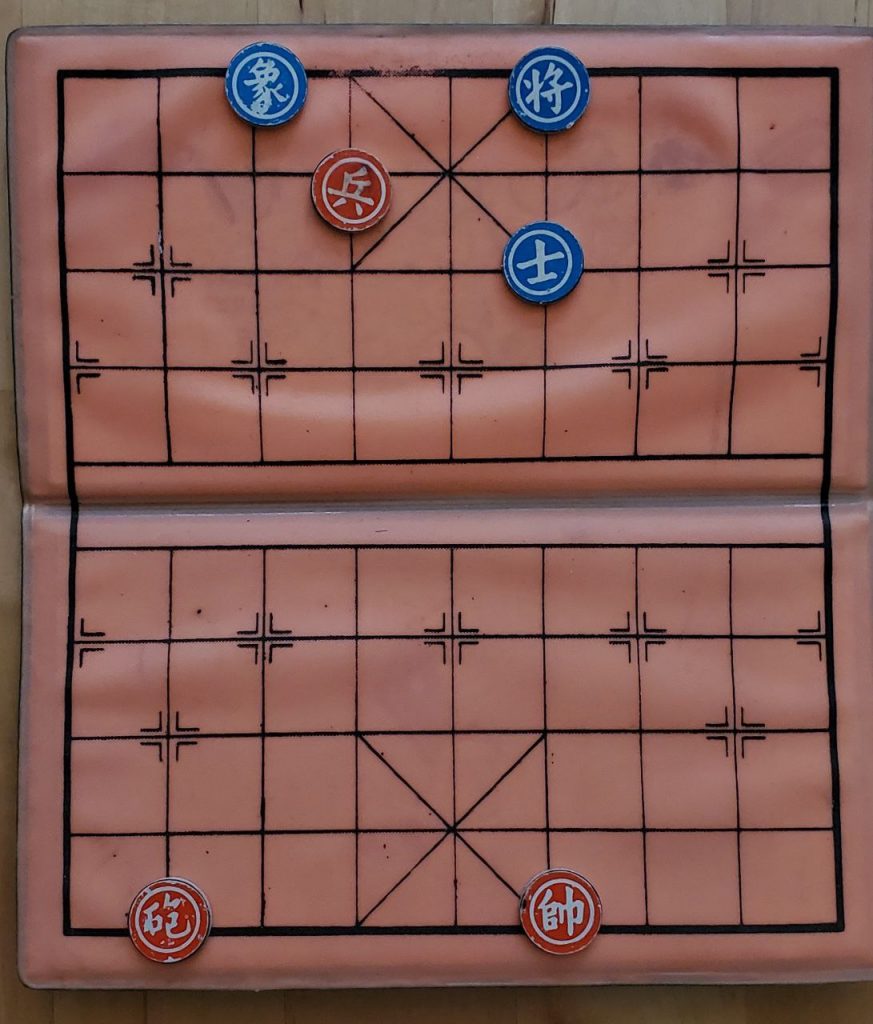
So I wanted to solve it, but had to go to work, I found an old small pocket XiangQi board to bring with me, on that board were fought endless battles on old Chinese trains…
In reality, thanks to my chess training, and the few pieces, I could see it in my head.
The coolness of being able to play blindfold in chess, yet while I can see the moves in my head, I cannot see the idea which brings me to solve this position.

Like in the Ulysses by Joyce a lot of thoughts crowded my mind. Should I watch the solution? After all if I die in a hour, at least I don’t have any regrets for leaving this earth for good, we don’t want to reincarnate endlessly, just because I need to solve this position!
But like in chess, I tried to understand the position, instead of proposing 3 candidate moves and calculate lines a la Kotov! (In hindsight it could have worked…)
And I realized immediately that while I can win the game if Black has a minister, I cannot win the game if Black has the elephant. But how do I kill the elephant? Isn’t it illegal now? LOL
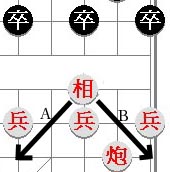
Chinese chess has 2 different ideograms to describe the same piece, which we would call bishop in chess. One is an elephant, the other is a man with a kind of tablet (and now the conspiracy theorists will say: ah ah, in Ancient China they already had Ipads!), a scribe we could say.

In XiangQi differently from chess, the soldiers (pawns) don’t promote when they reach the last ranks. Hence it becomes double important, or definitely more important than in chess to avoid to advance them too much, because then they become useless.
Came back from work… still didn’t see a solution… strangely the chess mind gets fixated only on one move, for me was C8+8, and couldn’t see nothing else. Contacted a friend in Italy, sent him the same position, and got the same result, he was fixated as me! Woke up in the morning and watched the solution! It seems C8+9 is the winning move!
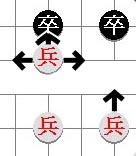

Once more we see Nimzowitsch in action. This move let only one piece to move, the Elephant on 3rd file, but blocks the other 2 pieces, the general and the bodyguard (also called minister).
The solution continues with: 1…E3+1 2.C8=2 the idea I totally missed.

In Chess as in XiangQi, we need to acquire a library of patterns, this is definitely one to remember, this maneuver made by the Cannon it’s something a XiangQi player surely knows, like chess players know rook maneuvers on the 8th rank to protect the seventh rank.
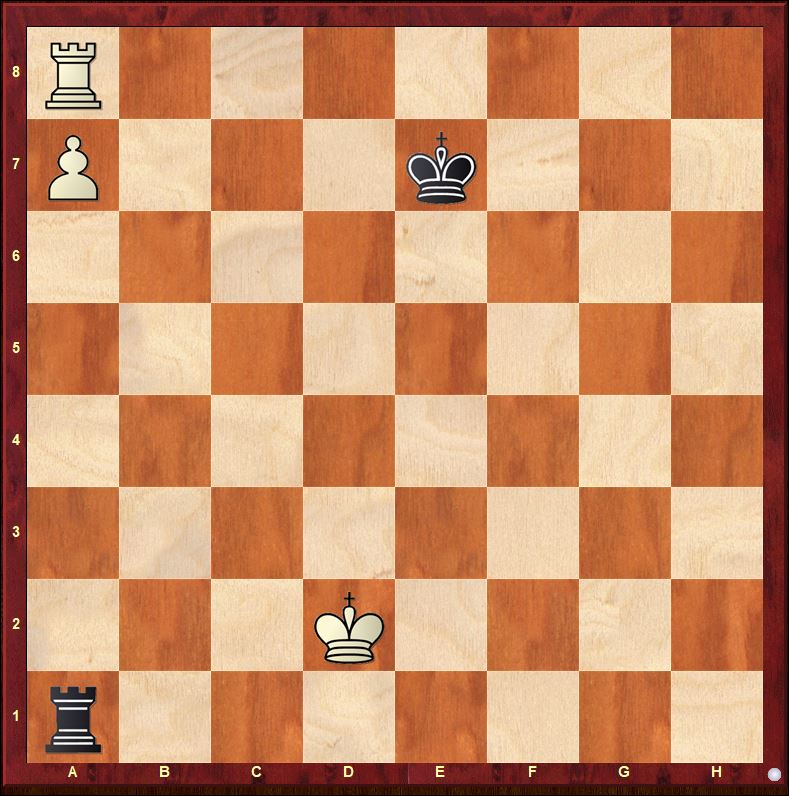
Here we can see a comparison, White is winning, because he can play Rh8, and if Black takes with Rxa7, White will play Rh7 winning the rook. This pattern is similar to the one we have seen above.
The final position of the solution of the Chinese chess endgame composition is the following:
3. C2-2 K6-1 3. P6=5 and now Black is in zugzwang.

In Chinese chess the two generals cannot “see each other” which means they cannot be on the same file unobstructed by pieces. Similar once more to the Kings in chess which cannot be on adjacent squares. This rule, makes the General quite effective, because it’s projecting his power across the board. Hence the Minister cannot take the pawn on the fifth file. The only Black piece which can move is the Elephant, but in moving, it will be captured by the cannon. In Chinese chess the stalemate doesn’t exist, Chinese chess is much more bloodthirsty, and when the opponent cannot move any of its pieces, he has lost.
Of course there are many more differences between the two games, and to explore them all would require a series of articles. But for those interested in learning more about Chinese chess there are many resources online.
